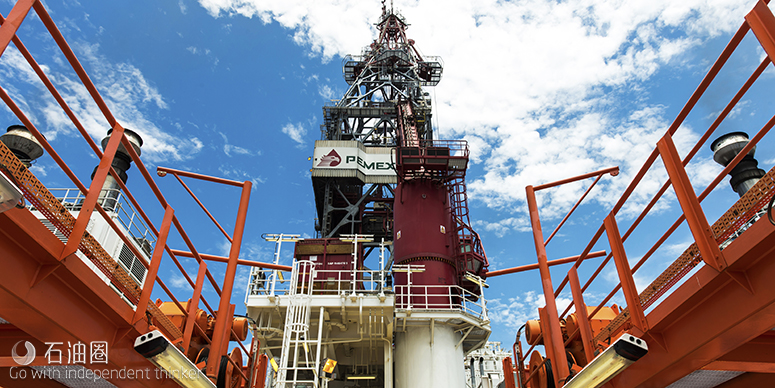In 2009, Russia cut off natural gas supplies to Ukraine, leaving thousands of homes and businesses without heat in freezing temperatures in parts of southeastern Europe. Russia has long been criticized by the United States for using its position as a monopoly supplier of natural gas for geopolitical leverage, especially toward Eastern European nations which are dependent on Russia for access to this important commodity for everything from heating, electricity, industry, and cooking.
As such, the U.S. has urged Europe to bolster its energy security by expanding pipeline capacity and integrating markets, diversifying supplies, and increasing storage to reduce the political risk associated with this dependence.
These same concerns are mounting in another country that has rapidly become dependent for its energy on a single supplier that suddenly poses new political risk. Mexico worries that under an America First energy policy, the United States may become the new Russia.
Natural gas trade between the U.S. and Mexico over the last five years has soared as a result of the U.S. shale gas boom, which propelled the U.S. into the new role of natural gas net exporter. This development could not have come at a better time for Mexico, which, despite launching a series of energy reforms, has faced dwindling gas production.
As a result of this reality, Mexico has become increasingly reliant on cheap U.S. natural gas imports. Pipeline capacity between the two countries doubled in the past five years, and may almost double again through the end of 2018, according to the U.S. Energy Information Administration. The share of natural gas in Mexico’s electricity generation mix has increased from 34 to 54 percent between 2005 and 2015, and Mexican industry has staked its growth on continued cheap imports.
But Mexico has not been the sole beneficiary to this trade. U.S. energy producers benefit as infrastructure constraints limit their ability to deliver this gas elsewhere around the world in a convenient and cost-effective manner. While the U.S. has begun to export liquefied natural gas (LNG), it will take several years before enough capacity is available to accommodate the volumes of gas currently going to Mexico.
Yet these positive interdependencies also create risks in the event of a U.S. supply disruption. Unlike oil or coal, which can be diverted relatively easily by ship to different ports, natural gas is far less flexible to transport. By contrast, most natural gas supplies are moved by pipelines between fixed points, creating unique energy security risks for gas-consuming countries highly dependent on neighboring supplies.
Mexico has few options to substitute imported gas from the U.S. The country’s unused LNG import capacity is less than half the volume of gas it currently imports from the U.S., and while it could switch back to burning fuel oil in older power plants, this is a costly and dirty option and has capacity limitations.
Up until now, Mexico’s energy security risks associated with U.S. gas supplies seemed remote. But President Trump’s threats to impose a border tariff, and his demands for Mexico to finance a border wall and renegotiate NAFTA, have precipitated a fall in relations between the two countries to their lowest point in decades.
The last threat, to renegotiate or even end NAFTA, is especially consequential for natural gas vulnerability. U.S. law requires a permit to export natural gas, and for exports to free-trade-agreement (FTA) partners that authorization is to be granted “without modification or delay.” However, for exports to non-FTA countries, authorization is given only after a finding that it is in the public interest, the opportunity for public comment and an environmental review.
If Mexico were to become a non-FTA country, or if a renegotiated FTA did not allow for national treatment for trade in natural gas, all gas exports to Mexico would be subject to this more burdensome approval process. Non-FTA approvals not only take more time, but are subject to more political risk. We saw this at work in the political controversy around LNG exports, which led to a roughly two-year permitting delay before the Obama Administration agreed to grant additional authorizations.
But the instability to Mexico’s energy security doesn’t end there. Imagine a scenario where a combination of factors like cold weather and pipeline or storage outages lead natural gas prices in the United States to spike. If the U.S. is now operating under an American First energy strategy, it is not unimaginable to think some might question why we would send scarce resources to other countries.
Moreover, given recent rhetoric, we cannot assume President Trump would stop short of threatening to cut off essential energy supplies as leverage to extract concessions from Mexico over paying for the wall or renegotiating NAFTA. While these risks seem unlikely at present, Mexican officials are understandably concerned.
Natural gas is not the only vulnerability Mexico faces. Crude oil trade also poses risks. While Mexico exports about 600,000 barrels per day of crude to the United States, U.S. refineries turn Mexican oil into gasoline and diesel, exporting it back to Mexico for use by Mexican consumers and businesses.
Around half of Mexico’s gasoline and diesel is imported, and nearly all of that comes from the U.S. New trade barriers like tariffs would raise costs for U.S. refiners to access crude, force Mexico to sell crude at a discount elsewhere and could disrupt Mexico’s refined product supply–although oil is far more fungible than gas so producers and consumers could adjust more easily.
As Mexico waits to see what an America First energy policy looks like, the nation might be wise to take a page from Europe’s playbook and make plans for a rainy day.


 石油圈
石油圈
